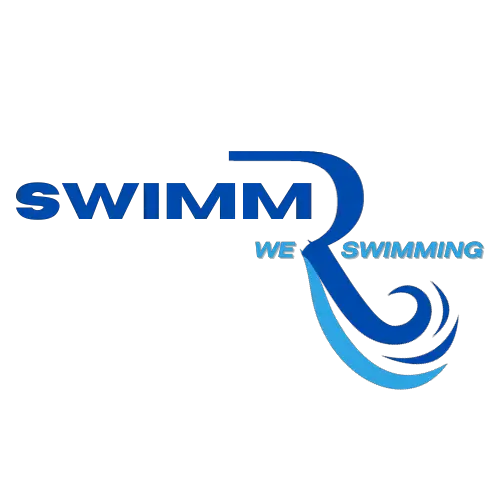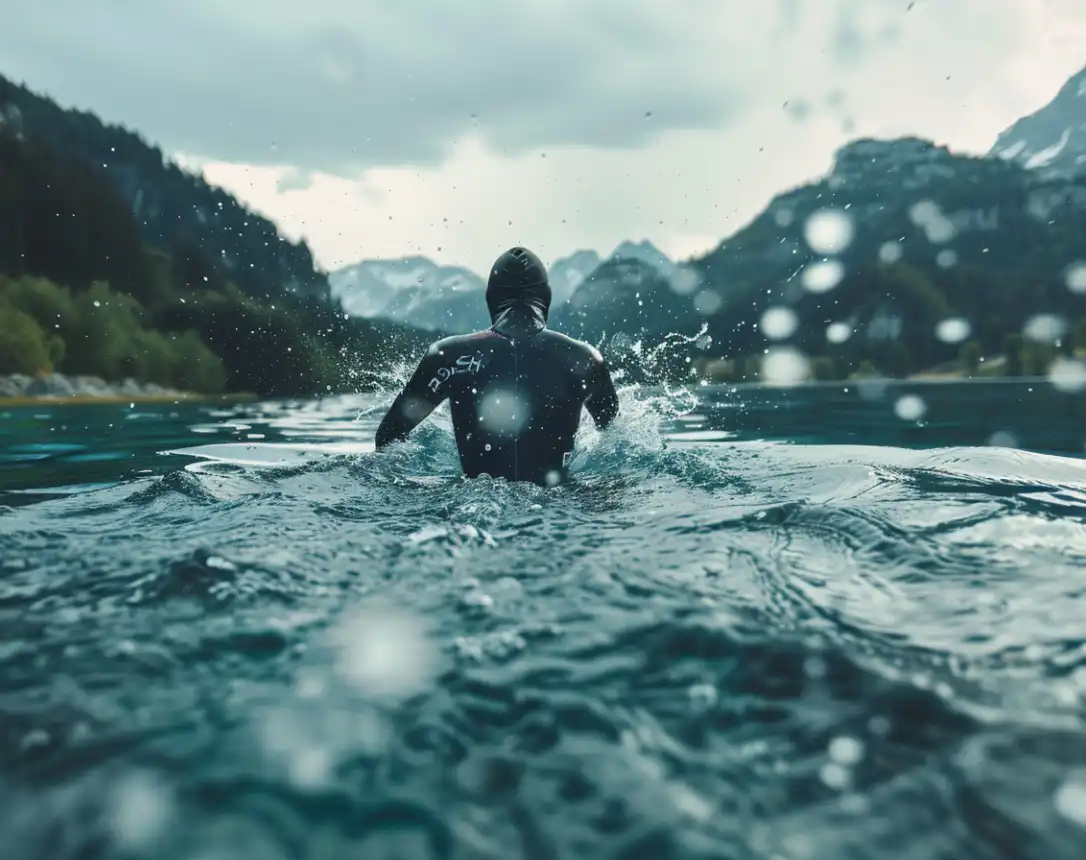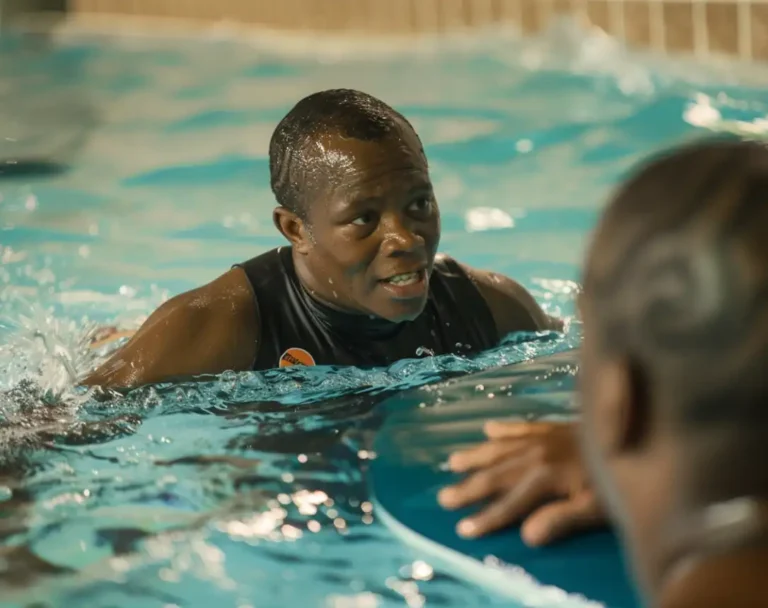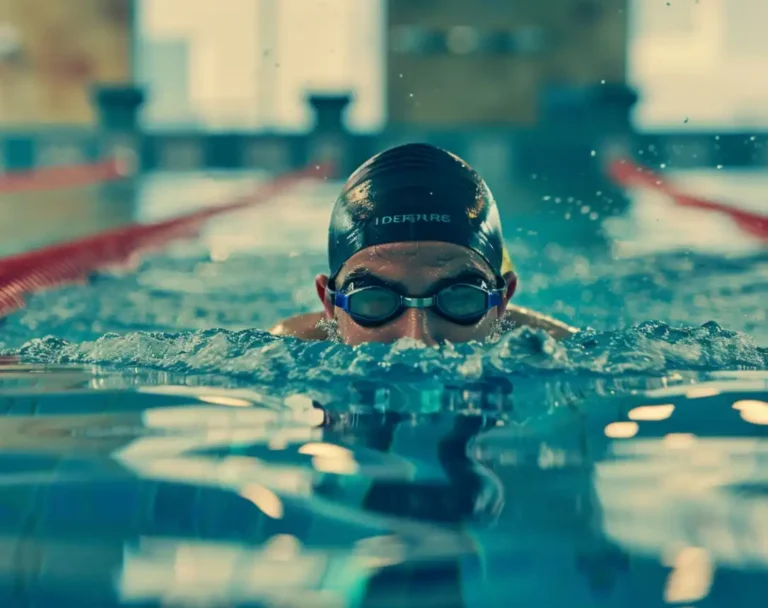Triathlon swim training is about more than just endurance; it’s about mastering efficiency, technique, and adaptability in open water. This segment of triathlon demands preparation that combines speed work with stamina and skillful navigation of varied conditions.
Our guide dives into specialized training strategies, focusing on optimizing your stroke for the unique challenges of triathlon swimming. Whether you’re a novice triathlete or looking to improve your swim segment, we offer insights to propel you through the water more effectively.
Triathlon Swim Training Essentials
Diving into triathlon swim training, I quickly learned that success hinges on a solid foundation in swim technique, a well-structured training plan, and dedicated workouts. Let’s jump right into how you can craft your path to becoming a proficient triathlon swimmer.
Starting Your Swim Training
When I began my swim training, I was advised to first assess my current swimming ability. I started with short, consistent sessions, focusing on building endurance and comfort in the water. Key tips for starting out include:
- Swim consistently, aiming for 2-3 times per week.
- Mix between pool sessions and open water swims to adapt to different conditions.
- Seek feedback from a coach to correct form early on.
Developing a Triathlon Swim Plan
A triathlon swim plan is your roadmap to improvement. My plan consists of tailored workouts that target endurance, speed, and technique. I learned that a dynamic plan should evolve with my progress and include:
- Endurance sessions for building stamina.
- Speed sets to improve race-pace swimming.
- Drills focusing on technique and efficiency.
Mastering Freestyle Technique
Freestyle is the stroke I use most in triathlon, and perfecting it has been a game-changer. I work meticulously on my stroke mechanics to become more efficient in the water. The components of my freestyle technique that are crucial to triathlon swimming include:
- A streamlined body position to reduce drag.
- Consistent breathing pattern to maintain oxygen intake.
- Effectual kick to balance and propel the body forward.
Effective Swim Workouts
When I zero in on maximizing my swim training, I prioritize workouts that finely tune both my speed and endurance. Nailing the perfect main set structure, diving into targeted interval training, and striking a balance between speed and endurance sets me up for triathlon success.
Main Set Structure
My main sets are the heart of my swim workouts. They are designed to mirror race-day intensity and conditions. For instance:
| Distance | Pace | Rest | Sets |
|---|---|---|---|
| 100m | Race Pace | 15s | 10 |
| 200m | Below Race Pace | 30s | 5 |
| 50m | Sprint | 20s | 15 |
I aim to incrementally push my limits within these sets, ensuring each rep is performed with the purpose of simulating race segments.
Interval Training
Then I dive into interval training. It’s the bread and butter for boosting my swim speed. By alternating between high-intensity laps and fixed periods of rest, I can improve my overall speed. A classic interval I often use is:
- 8 x 50m at an all-out effort, with 45 seconds rest between each
This interval type helps me elevate my heart rate and muscles to adapt to the stress similar to race day.
Speed and Endurance Balancing
Lastly, I focus on blending speed with endurance. My sessions toggle between fast-paced bursts and longer, steady-state swims. This mixture teaches my body to maintain a brisk pace over a considerable distance. To illustrate, one workout might be:
- 5 x 200m at a moderate to fast pace, with 60 seconds rest combined with
- 10 x 100m sprint sets, with 30 seconds rest
This combination allows me to evolve my ability to sustain speed through fatigue, a crucial triathlon skill.
Swim Drills and Techniques
From the moment I first plunged into the world of triathlons, I knew how vital swim drills and techniques are to slicing through the water efficiently. Perfecting your stroke can shave seconds or even minutes off your swim time!
Drill Variations
Working with drill variations is like having a personal toolbox for your swimming. Utilize items like buoys, paddles, and fins to not only improve strength but also to fine-tune your technique. Let’s break it down:
- One-Arm Drill: Focus on one arm at a time to enhance your stroke’s propulsion.
- Catch-Up Drill: This technique fosters a longer glide and better timing by ensuring one hand ‘catches up’ to the other before starting the next stroke.
Improving Form and Alignment
My swim form transformed when I prioritized my alignment in the water. Here’s how you can do the same:
- Kickboard Kicks: Use a kickboard for kicking drills to build leg strength and improve your body position.
- Stroke Drills: Concentrate on each part of the stroke cycle separately. This breaks down complex movements and builds muscle memory.
Remember, integrating these drills and techniques into your routine isn’t just about working harder, but also working smarter.
Breathing and Sighting
I’ve discovered that mastering my breathing and sighting is crucial in triathlon swim training—especially in open water. These skills not only keep me relaxed but also ensure I’m swimming the shortest distance during a race.
Breathing Techniques
Bilateral Breathing: I find alternating which side I breathe every three strokes helps to maintain balance in my stroke and gives me a good rhythm. I focus on exhaling fully underwater so that I can take a quick, full breath. This technique prevents oxygen debt which is essential for endurance.
Rhythmic Breathing: I always practice breathing in a set pattern. It not only helps me with my pace, but also ensures a steady supply of oxygen to my muscles. For instance, I breathe every two strokes during sprints and every four during endurance sets.
Open Water Sighting Drills
Alligator Eyes: I use this drill to practice lifting my eyes just above the waterline while keeping my head in line with my spine. It’s like an alligator peeking just above the surface. I do this briefly during my stroke to spot buoys or landmarks.
Sighting Frequency: In open water, I’ve learned to sight every 6-10 strokes to stay on course. It’s crucial not to overdo it since lifting my head too often can disrupt my body position and cost me valuable energy.
By incorporating these techniques into my swim training, I can maneuver through the open water efficiently, save energy by drafting behind others, and ensure I’m always on the right track.
Strength and Conditioning
I can’t overstate the rush I feel when powering through water—a testament to rigorous strength and conditioning, the backbone of triathlon swim training. It’s a game-changer, especially when every second counts.
Dryland Training
In the gym, I prioritize exercises that mimic swimming motions. Dryland training enhances my upper body strength and endurance, crucial for those long stretches of open water. I regularly incorporate the following:
- Pull-ups: For powerful lats and shoulders
- Push-ups: To engage chest and tricep muscles
- Core exercises: Planks and Russian twists for solid midline stability
- TRX Rows: For a full-range back workout
Such targeted workouts dramatically improve my in-water performance, reducing fatigue when it matters most.
Leg Strength and Kick Intensity
While upper body power is vital, I never neglect my legs. A robust kick driven by strong hips and thighs offers immense propulsion. To fortify my leg strength, I focus on:
- Squats: Come to the rescue for overall leg power
- Leg press: Specifically targets my quads and glutes
- Calf raises: Ensuring strong push-offs from the wall
- Kickboard drills: Increase kick intensity and hip action
This regimented approach to training not only builds muscle resilience but also refines my kicking technique for optimal efficiency in the water.
Swim Equipment and Gear
I’ve discovered that having the right swim equipment can totally transform your training sessions! Let’s dive into the specifics of selecting the perfect swimwear and the essential training tools that’ll take your performance to the next level.
Choosing the Right Swimwear
Choosing a wetsuit or tri suit is critical for both comfort and speed. My experience taught me to seek materials that provide flexibility and buoyancy. A quality wetsuit minimizes drag in the water, letting me cut through the waves like a hot knife through butter. For pool training, I stick to form-fitting, chlorine-resistant swimwear to ensure durability and performance.
- Wetsuit: For open water, temperature retention and streamlined design are key.
- Tri suit: During races, seek quick drying and minimal chafing features.
- Swimwear: Chlorine-resistant fabric is a must for pool workouts.
Selecting Essential Training Tools
Training tools are my secret weapons for enhancing stamina and technique. A heart rate monitor is indispensable for tracking my effort and ensuring I’m training at the right intensity.
- Goggles: Vision clarity is non-negotiable; anti-fog and UV protection are bonuses.
- Swim Cap: Keeps my hair out of the way and reduces drag.
- Smartwatch/Heart rate monitor: Vital for real-time metrics and progress tracking.
- Pull Buoy: I swear by it for upper body strength and improved body alignment.
- Paddles: Perfect for power training and refining stroke mechanics.
- Fins: Boosts my kick strength and ankle flexibility during drills.
I always confirm my gear enhances my swim without hindering my movements. Whether it’s a techy smartwatch or simple swim cap, every piece plays a pivotal role in my success. Remember, the best gear is the kind that makes you forget it’s there, allowing you to focus solely on your swim!
Open Water Swim Strategies
I’ve found that conquering the swim leg of a triathlon is about smart preparation and strategy. Open water presents unique challenges, but with the right approach, race day becomes an exhilarating experience rather than a daunting task. It’s pivotal to master navigating the open water and make precise race day preparations.
Navigating the Open Water
In open water, your ability to navigate effectively is a game-changer. Unlike the clear lines at the bottom of a pool, open water requires you to sight regularly to stay on course. Develop a rhythm: swim a certain number of strokes—say, 10—then lift your head slightly to glance forward, sighting a fixed point like a buoy or landmark. This ensures you don’t veer off course which can add unnecessary distance to your swim.
Drafting off another swimmer can also be a smart move. Position yourself behind or slightly beside their feet, allowing their movements to pull you through the water, saving energy. But remember to practice this in training; too close, and you risk a kick to the face. Too far, and you lose the draft.
Race Day Preparation
Race day success starts well before the starting horn. Ensuring your wetsuit fits perfectly is vital; it should be snug without restricting movement or breathing. Acclimate yourself to the temperature of the open water pre-race, which can be shockingly different from a pool.
Nutrition equally plays a part. Fine-tune your pre-race meal to sit well with your stomach and provide sustained energy. Hydration is a must, even in water sports. Remember, by the time you’re thirsty, it’s already too late to hydrate. Develop a nutrition and hydration plan that sustains your energy throughout the swim.
Triathlon Race Distances
When I first dipped my toes into the world of triathlons, I learned that the races come in a variety of distances. Knowing these can help you train effectively for whichever triathlon you’re excited to conquer next!
Sprint Triathlon Focus
Distance:
- Swim: 0.5 miles (750m)
- Bike: 12.4 miles (20km)
- Run: 3.1 miles (5km)
A sprint triathlon is the shortest of the triathlon formats, which makes it an excellent starting point for beginners. My sprint triathlon journey honed in on speed and agility. Shorter distances require a more intense pace, so focus your training on interval workouts to build up your stamina and quicken your transitions.
Olympic to Ironman Transition
Olympic Distance:
- Swim: 0.93 miles (1.5km)
- Bike: 24.8 miles (40km)
- Run: 6.2 miles (10km)
Half Ironman (70.3):
- Swim: 1.2 miles (1.9km)
- Bike: 56 miles (90km)
- Run: 13.1 miles (21.09km)
Full Ironman:
- Swim: 2.4 miles (3.8km)
- Bike: 112 miles (180km)
- Run: 26.2 miles (42.20km)
Transitioning from an Olympic distance to a Half Ironman (often referred to as Ironman 70.3) or a Full Ironman is a leap in endurance. My secret? It’s about gradually increasing your distance during training, allowing your body to adapt. Always pay attention to nutrition and recovery, these become crucial as you move towards the longer, grueling Ironman distances. Whether it’s half or a full, each Ironman 70.3 or Ironman race is a testament to personal willpower and perseverance.
Recovery and Maintenance
I’ve discovered that the true secret to triathlon success isn’t just the grueling workouts; it’s also mastering the art of recovery and sticking to a meticulous maintenance routine. Recovery is this magical phase where our bodies repair and strengthen, and regular maintenance is the silent champion behind consistent training.
Post-Workout Recovery
Post-workout recovery should be immediate and strategic. I always ensure that my cooldown is as rigorous as my warm-up, gradually reducing my heart rate and stretching to prevent lactic acid buildup. Here’s a quick checklist I use post-workout:
- Cooldown Phase: At least 10 minutes of light swimming to wind down from the main workout.
- Hydrate and Refuel: Replacing lost fluids and electrolytes while incorporating proteins and carbohydrates to aid in muscle repair.
- Stretching: Focusing on major muscle groups used in swimming to improve flexibility and reduce soreness.
By sticking to these steps, I foster better recovery, which means I can hit the pool feeling refreshed and strong for my next session.
Regular Maintenance Schedules
I regard my regular maintenance schedule as the backbone of my training. This isn’t about pushing my limits; it’s about maintaining them. My schedule includes:
Weekly Warm-up Practices: Every swim begins with dynamic stretching and a graduated increase in intensity.
Rest Days: Scheduled rest days are crucial. They allow my body to recover fully, which prevents overtraining and injuries.
Cross-Training: I engage in activities like cycling, which complement my swimming by building core and leg strength without overtaxing my swim-specific muscles.
Abiding by this disciplined agenda keeps me at the top of my game and ready for the incredible challenge that triathlon swimming poses.
Community and Professional Guidance
I’ve discovered a powerful truth: the guidance within swim communities and from professional coaches can propel a triathlete’s performance beyond expectations. It’s thrilling to see the transformation that the right support can bring to your swim training!
Joining Swim Communities
I’ve joined various swim communities, and each has enhanced my triathlon journey. Engaging with U.S. Masters Swimming, I found a network of peers ranging from beginners to seasoned swimmers. Here’s what’s impactful:
- Networking: Share experiences and gain insights.
- Motivation: Group workouts push you further than solo sessions.
- Events: Participate in meets and clinics to test skills and learn.
Expert Coaching Insights
Securing a swim coach who understands the nuances of a triathlete’s needs is a game-changer. A deep dive with a dedicated coach can refine technique and strategy to shave precious seconds off your time. What’s beneficial:
- Personalized Training Plans: Tailored to my specific strengths and weaknesses.
- Feedback: Real-time correction and encouragement.
I highly recommend the Outside+ app for triathletes seeking structured training with expert guidance at their fingertips. Your progress is just a community and a coaching tip away!
Integrating Swim with Bike and Run
I can’t tell you how exhilarating it is to seamlessly connect my swim, bike, and run training into a unified triathlon plan. Perfecting the transition and building the endurance to tackle all three disciplines is a game-changer. It allows me to turn individual strengths into collective power, elevating my performance where it really counts: in the race.
Balancing the Three Disciplines
Swimming, if not managed well, can be a silent performance thief in triathlon training. I ensure that my training plan involves equal parts emphasis on each discipline. It isn’t just about clocking miles but incorporating intensity and recovery across swims, bikes, and runs. My weekly schedule could look something like this:
- Monday: Swim (focus on technique)
- Tuesday: Bike (high-intensity interval training, HIIT)
- Wednesday: Run (tempo run)
- Thursday: Swim and Bike (light recovery swim followed by a moderate cycle)
- Friday: Rest
- Saturday: Brick Workout (Bike followed by a run)
- Sunday: Long Distance Run
By structuring my training like this, each workout complements the next.
Triathlon-Specific Workout Blends
Combining swim, bike, and run training sessions, commonly known as brick workouts, is essential. I integrate these into my regimen at least once a week. For instance, after a moderate cycle, I transition immediately to a run, mimicking race conditions. This helps my muscles adapt to the switch from pedaling to running, reducing the jelly-leg feeling post-transition. Brick workouts look like this:
- Bike to Run: 1-hour bike at a steady pace, followed by a 30-minute run.
- Swim to Bike: 800m swim at moderate intensity, then directly onto a 1-hour bike ride.
The cross-training effect from these blended workouts is invaluable for boosting my stamina and race-day readiness. By focusing on purposeful and paced integration of swim, bike, and run, my triathlon training sets me up for success.
Advanced Techniques and Analytics
I’m captivated by the potential of technology and in-depth analytics to revolutionize triathlon swim training. It’s exhilarating how the right gadgets and analysis can transform my swim segment from good to outstanding!
Utilizing Technology for Performance
Smartwatches and heart rate monitors have become indispensable in my quest for peak performance. By reliably tracking my heart rate, these nifty devices provide insights into my cardio endurance during training sessions. Tables like the one below keep me informed at a glance:
| Metric | Value | Training Impact |
|---|---|---|
| Heart Rate | 150 bpm | Optimal cardio training zone |
| Pace | 1:30 min/100m | Speed work enhancement |
My swim coach utilizes this data to tailor my routine, focusing on technique work to maximize each stroke’s efficiency.
Advanced Stroke Analysis
In-depth video analysis has been pivotal in fine-tuning my stroke. Here’s an example: I learned that adjusting my hand entry angle can help conserve energy—energy I’d otherwise spend correcting my path through the water. This adjustment was a game-changer, significantly improving my pace with less effort. My coach reviews footage with me, highlighting these nuances in technique, which has been instrumental in my speed work. The key is to translate that knowledge into muscle memory for race day.
FAQ – Frequently Asked Questions
How often should I train for the swim segment of a triathlon?
Aim for 2-4 swim sessions per week, focusing on both technique and endurance.
What specific skills should I focus on for triathlon swimming?
Work on open water skills like sighting, drafting, and swimming in a pack, besides stroke efficiency.
Is pool training sufficient for triathlon swim preparation?
While pool training is crucial, include open water sessions to adapt to different swimming conditions.
Start now to elevate your triathlon swim training and share your journey or seek advice in the comments or on social media. Swim strong!






